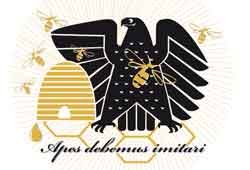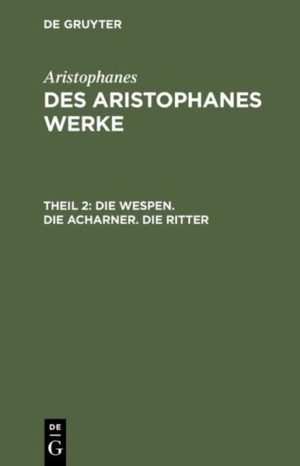- Softcover: 191 Seiten
- Verlag: Bundesforschungsinstitut für Kulturpflanzen (JKI)
- Autor: Tarek Elsayed
- Auflage: 1. Aufl., erschienen am 15.09.2016
- ISBN-10: 3-95547-038-5
- ISBN-13: 978-3-95547-038-8
- Größe und/oder Gewicht: 21,0 x 14,0 cm
Biological control of bacterial wilt disease caused by Ralstonia solanacearum: Insights into the ecology of antagonists and their complex interaction with the pathogen and the host plant rhizosphere microbiome
Autoren: Tarek Elsayed12,95 €

HONIGHÄUSCHEN (BONN) – Plant diseases are among the most limiting factors in agricultural production all over the world, particularly when the causal agent is characterized as quarantine pathogen. One of the most devastating diseases is bacterial wilt of potato and tomato caused by Ralstonia solanacearum (Rs) which is regarded as an epidemic soil-borne quarantine pathogen. The persistence and survival of Rs in soil for years and its ability to colonize a huge number of hosts and non-host crops poses a huge agricultural threat. In order to cope with such pathogen, investigations into the microbial diversity and suppressive potential in the soil and rhizosphere of potential host plants are fundamental. In this context, we elucidated the effect of the soil types (DS, LL and AL) and the potato plant sphere (rhizosphere, endorhiza, endocaulosphere; tuber ecto- and endosphere) on the proportion and diversity of in vitro antagonists towards Rs. For this purpose, potato plants were grown under field conditions in three soil types that were stored at a unique experimental field site for more than ten years under the same weather conditions and cropping history. Screening equal numbers of dominant randomly picked colonies from each sphere for in vitro antagonistic activity towards Rs showed that in all spheres antagonists were detected among the dominant cultivable bacteria and that the highest proportion of antagonists was observed in the endophytic compartments. While several genotypes were detected only in one soil, other genotypes were isolated from two or three soils and in some cases with a preference to a particular soil. Based on these results, it is possible to conclude that both, plant sphere and soil types, affect the diversity and proportion of bacteria with in vitro antagonistic activity towards Rs. More antagonists with beneficial characteristics were isolated from plants grown in DS soils. However, to get more insights into the effect of the three soil types on the bacterial community associated with different plant spheres, denaturing gradient gel electrophoresis (DGGE) of 16S rRNA gene fragments amplified from total community DNA (TC-DNA) was employed to compare the bacterial communities associated with the live spheres of potato plants grown in the three soil types. Our results showed that, based on the soil types, bacterial communities associated with potato plant spheres differed significantly only in the rhizosphere and in the soil attached to tuber while the endophytic bacterial communities were more variable and less influenced by the soil type. Additionally, bacterial community composition significantly differed between different potato spheres of the plants that were grown in the same soil type indicating niche-specific bacterial communities. Furthermore, our results indicated that the effect of the plant sphere was more pronounced than that of the soil type. Most of the antagonists obtained in our first study (Chapter 2) were affiliated with the genus Pseudomonas which is often Ill enriched in the rhizosphere due to their good rhizosphere competence as well as their ability to rapidly respond to root exudates and to produce multiple compounds with plant beneficial activity. We explored the influence of the three soil types on the abundance of Pseudomonas populations and genes related to beneficial traits in different potato plant spheres.Pseudomonas community composition associated with potato plant spheres was analyzed by DGGE of Pseudomonas-specific 16S rRNA gene fragments amplified from TC-DNA and Pseudomonas-specilic real-time PCR as influenced by the soil types and/or potato plant spheres. PCR-Southern blot hybridization was used to investigate the prevalence and distribution of Pseudomonas-specilic genes encoding biological control and plant growth promoting related functions (phi, phz, prnD, hcnBC, pcbC, pqqE and gacA) in different plant spheres and soil types. The Pseudomonas community composition and abundance was significantly influenced by the soil type. The effect of soil types was only pronounced in the bulk soil and the soil tightly attached to the yield tubers. Both soil type and plant sphere had a very distinct effect on the distribution of Pseudomonas functional genes. Southern blot hybridization indicated the highest abundance of all tested genes was detected in the rhizosphere of potato plants grown in the LL soils, except for the 2,4-diacetyl phloroglucinol (ph. Our study indicated that Pseudomonas populations carrying the tested genes correlated with the type of soil and the enrichment of these genes, depended on the soil type-dependent rhizosphere effect. Finally, three greenhouse experiments with tomato plants were performed to evaluate the rhizocompetence of in vitro antagonists and their ability to control Rs. The population densities of Rs and antagonists were estimated by selective plating and in TC-DNA by means of real-time PCR and fliC gene PCR-Southern blot hybridization. Bacillus vallismortis (B63) and Pseudomonas brassicacearum (AL2YTEN-142)-inoculated plants showed a pronounced delay or no disease symptoms and significantly decreased in Rs population compared to the uninoculated plants. Amplicon sequencing of 16S rRNA gene fragments amplified from TC-DNA revealed pronounced treatment-dependent shifts in bacterial communities of the tomato rhizosphere. Most important, the strong reduction of Rs in the presence of the antagonists was confirmed and dynamic taxa in response to Rs or the inoculants were identified. Confocal laser scanning microscopy uncovered colonization patterns of the AL2YTEN-142. Gip-positive cells were detected in lateral roots, root hairs and epidermal cells and within xylem vessels. Both inoculants hold great promise to control Rs under field conditions. In conclusion, this thesis provides deeper insights into the influence of different soil types and plant microenvironments on total bacterial and Pseudomonas communities regarding their composition and functional diversity, paying particular attention to the diversity and abundance of antagonists of Ralstonia IV sofanacearum. A selection of antagonists was tested for in planta biological control of Rs, and the complex interactions between antagonists, pathogen and indigenous rhizosphere microbiome were investigated. In future studies, the biological control of Rs and the plant growth promotion will be tested on potatoes under field conditions in Egypt.
Über „Biological control of bacterial wilt disease caused by Ralstonia solanacearum: Insights into the ecology of antagonists and their complex interaction with the pathogen and the host plant rhizosphere microbiome“
Das vorliegende Sachbuch zu Themen aus Umwelt und Natur „Biological control of bacterial wilt disease caused by Ralstonia solanacearum: Insights into the ecology of antagonists and their complex interaction with the pathogen and the host plant rhizosphere microbiome“ wurde erarbeitet und verfasst von Tarek Elsayed. Dieses Sachbuch erschien am 15.09.2016 und wurde herausgegeben von Bundesforschungsinstitut für Kulturpflanzen (JKI).
Bücher wie „Biological control of bacterial wilt disease caused by Ralstonia solanacearum: Insights into the ecology of antagonists and their complex interaction with the pathogen and the host plant rhizosphere microbiome“ sind im Onlineshop des Honighäuschens bestellbar. Online bestellte Fachbücher zur Imkerei und zu anderen Themen der Umwelt und des Artenschutzes sind zu den üblichen Öffnungszeiten auch direkt im Buchladen Bundesamt für magische Wesen in Bonn, der Stauhauptstadt von Nordrhein-Westfalen abholbar und werden auf Wunsch verschickt.
Das Thema Bienensterben, Rückgang von Insekten und allgemeines Artensterben ist in aller Munde und das Honighäuschen als frühere Bioland Imkerei hat sich von Anfang an daran beteiligt. Mehr als 35 Jahre Imkereierfahrung nahmen ihren Anfang 1982 mit den ersten eigenen Bienen.

Der zehnjährige Junge, der 1977 einem Hamburger Imker über die Schulter schaute; der Fünfzehnjährige, der mit der Imkerei in Zeiten begann, in denen es noch keine Varroamilbe gab; der achtzehnjährige Fahrschüler, der lernte, dass man die Windschutzsscheibe seines Autos nach einer längeren Fahrt von Insekten säubern muß; der zwanzigjährige Student, der für seine Bienen einen Platz in Bonn suchte; der dreißigjährige Berufsimker, der seinen Bienen quasi eine Gutenachtgeschichte erzählte und sich den Kopf zerbrach, wie man die Umwelt mit ihren Bienen, Wespen, Schmetterlingen und andere blütenbesuchenden Insekten vor den Machenschaften der Agrargiftindustrie und der Gleichgültigkeit agrarindustriehöriger Politiker schützt; der Imker, der nicht nur auf dem Weihnachtsmarkt Bonn die Öffentlichkeit suchte, um bei Führungen an den Bienen auf dem Dach der Bundeskunsthalle zu erleben, dass Kinder (und deren Helikoptermuttis!) Angst vor Schmetterlingen hatten, bis hin zum Begleiter von Forschungsprojekten zu den Riesenhonigbienen Nepals oder den Killerbienen Afrikas, stellt fest, dass etwas sehr im Argen liegt in unserem Umgang mit der Umwelt.
Es sollte jedem bewußt sein, dass die Haltung „Natur ja, aber bitte woanders!“ nicht in Ordnung ist.
Die wunderschöne Welt der Natur

In unserem Online-Buchshop finden Sie viele Bücher wie „Biological control of bacterial wilt disease caused by Ralstonia solanacearum: Insights into the ecology of antagonists and their complex interaction with the pathogen and the host plant rhizosphere microbiome“, die Ihnen die fantastische Welt der Bienen, Wespen, Ameisen, Hornissen und Schmetterlinge sowie anderer Insekten näherbringen.
Aber nach wie vor stehe ich Ihnen auch gern zu einem Gespräch oder zu einer Beratung im Umgang mit Bienen, Wespen, Hornisse, Wildbienen und Hummeln zur Verfügung, wenn Sie Fragen haben. Besuchen Sie uns in Bonn im Bundesamt für magische Wesen.
Und natürlich gibt es auch weiterhin Honig, Bienenwachskerzen und Met bei uns und zwar das ganze Jahr – nicht nur zu Weihnachten.
| Gewicht | 200 g |
|---|---|
| Größe | 21 × 14 cm |
Marke
Bundesforschungsinstitut für Kulturpflanzen (JKI)
Nur angemeldete Kunden, die dieses Produkt gekauft haben, dürfen eine Bewertung abgeben.





Bewertungen
There are no reviews yet